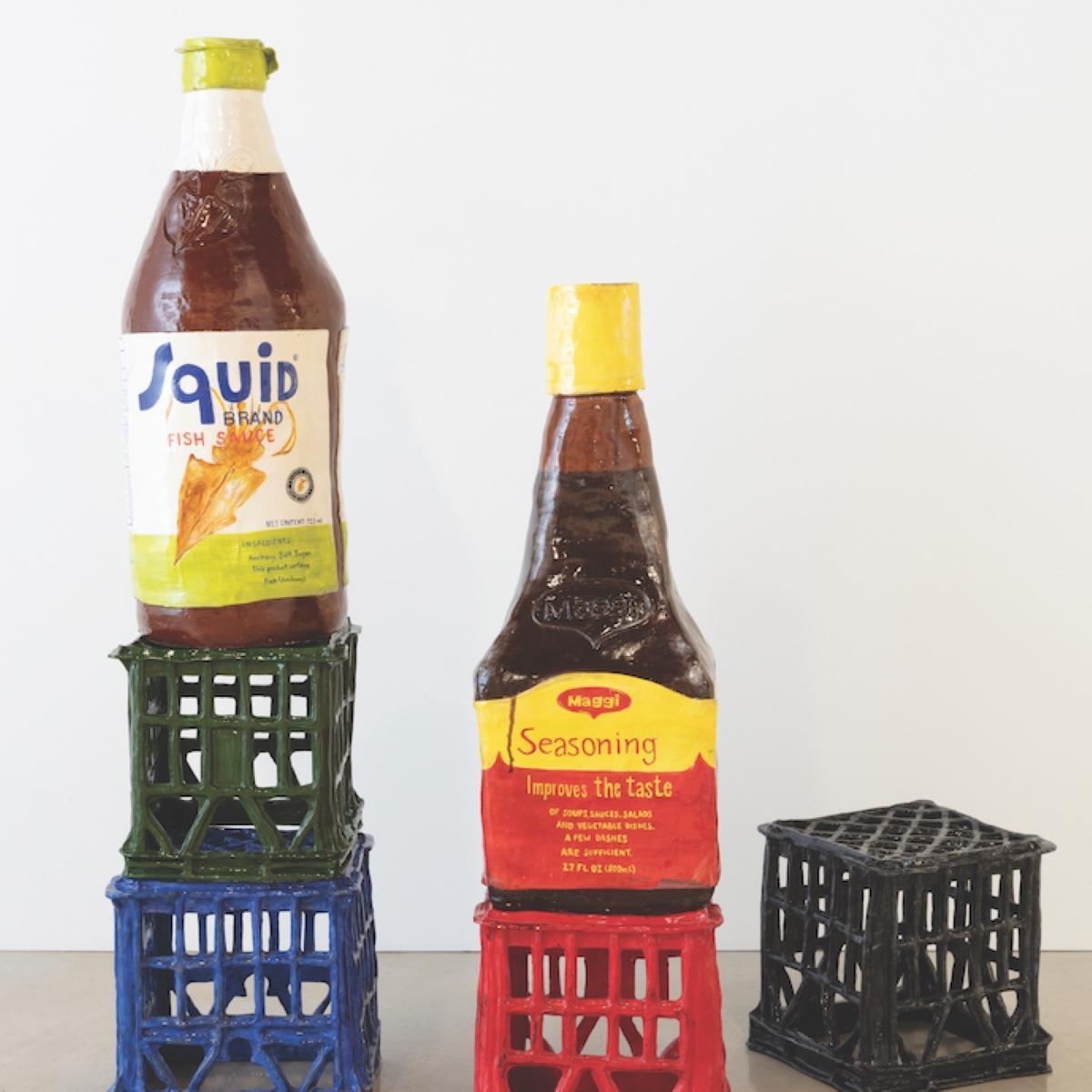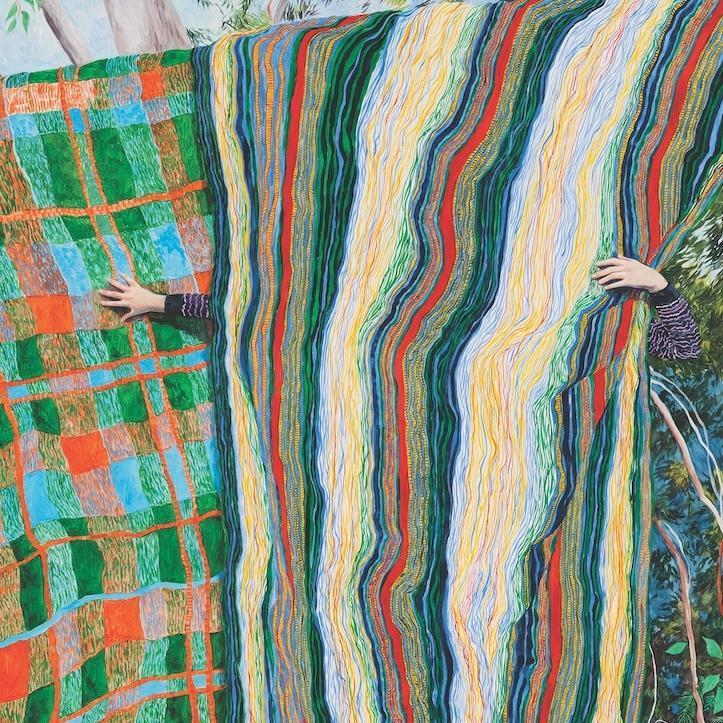JACKY REDGATE: AN INTERNAL LOGIC
With a career spanning four decades, Jacky Redgate is informed by what she describes as personal and impersonal systems.
Words: Louise Martin-Chew
Photography: Zan Wimberley
Jacky Redgate laughs when she says her work looks like “it comes from out of space”. Its forms are diverse and vibrant, ranging through photography to sculpture and installation. Imagery of circles, mirrors, systematic capture of objects and formal conceptual perceptions have a minimalist aesthetic. Through photography they are extended into found photographs and installation that may include dolls, the odd stuffed teddy bear and other objects drawn from her past. “The works often look different from each other – as though not even by the same artist,” she says. However, “there is an internal logic.”
Her career, now spanning four decades, is peppered with major solo and survey exhibitions, prizes and she is “fortunate”, she tells me, to have had significant critical notice from curators and writers. The long-running “campaigns” or series which have marked her practice have contrasts, yet are informed by what she describes as personal and impersonal systems. The personal works draw on her family’s emigration and childhood illness through photographs and documents, while impersonal and formal works reflect the minimal and conceptual concerns so dominant during her art school training in the 1970s. Her mirror series alone spans some 20 years, becoming what curator Ann Stephen described as an autobiographical mask.
This comment alludes to the potential to draw the personal and the impersonal together. Redgate says that, “a diary of illness written by my mother when I was three years old has become the pervasive subtext to the development of my work as an artist. At that time, parents couldn’t visit children in hospital. I was separated from the family and my twin sister. I suffered from hallucinations and was obviously traumatised. They’re my earliest memories too.” This document was gifted to Redgate by her mother when she was an art student.
Born in 1955, Redgate emigrated to Australia with her family from London in 1967. “I’m a Ten Pound Pom,” she says. “When I was a young artist I made work about my experience of being a British migrant, but I’m also a coloniser. I have continued to be informed by my experience as a migrant and my work has brought together both personal and institutional narratives. Like many artists I have also lived and worked overseas. I had a residency at the Künstlerhaus Bethanien, Berlin, where I lived and worked between 1987-89.”
From a working class family, she left school when she was 16 to work in an office. She went to night school to get her leaving certificate and began nursing, but was diagnosed with arthritis and wasn’t able to continue. It was during the Whitlam Government era of free education and she spent a year at Flinders University studying fine arts, philosophy and history, building her folio. After that she was accepted into South Australian School of Art, Adelaide, where she gained her Bachelor of Arts, Sculpture in 1980.
While in the 1980s Redgate worked solely in photography, the 1990s were dominated by sculpture. The series Life of the System, 1998-2000, took her back into photography where she changed the shape of the object through the bellows of her 5 x 4 large format analogue camera. To Redgate, all of her work is sculpture; from the onset she has moved between and two- and three-dimensional space.
The pandemic was disruptive for Redgate with lockdowns in Sydney. She continued to make work in her home studio, building assemblages to be photographed, but it was difficult to access photographic laboratories and, even now she says, “I can’t get film.” She delivered the photographic series Hold On, curated by Jason Smith for Geelong Gallery in Victoria early 2020. “That’s partly where I’m stepping off from,” she says. “I am still caught up in imagining new scenarios to photograph.” Despite Covid-19 interruptions, this period has offered time to research and experiment.
When we speak, she is deep in the process of working toward her first solo exhibition at Gallery Sally Dan-Cuthbert, Sydney, which represents her. Redgate is also represented by Melbourne’s ARC ONE Gallery. She tells me, “I have made many photographic bodies of works using a folding screen and mirrors as a background. In the series Hold On, 2019-20, I contaminated the objective geometries of my previous formal minimalist mirror works by staging childhood dolls and teddy bears reminiscent of my childhood.” Hold On shows, “the more irrational side of my practice”. While she began wanting to get out of the fold, she found herself back in it, with this visual device yielding much more for her.
Redgate’s recent thinking, about photographic space and geometry has led her to British Constructivist artist Marlow Moss, who was born in London, and lived and worked in Cornwall. Moss was little known in her lifetime but has been compared to her friend Piet Mondrian – with Moss’s explorations into neoplasticism more mathematically-based than those of her Dutch colleague. Redgate’s connections to Moss come from her personal archive.
She said, “Taking me to a family snapshot that I used in my series Untitled Day, 1999, where my twin sister and I are wearing Mondrian dresses, made by my mother from a DIY Yves Saint Laurent sewing pattern.” The photograph was taken in a relative’s garden in Cornwall in 1967.
While Redgate doesn’t want to say too much about the work in progress, at times she has appropriated her previous work, merging old and new. In Redgate’s practice, the drawing together of historical sources, narratives referring to a modernist heritage, migration, convalescence, feminism, studio constructions and an aesthetic that is slick and highly resolved is united, at times, with the emotional slippage of her more personal assays. It is, inevitably, compelling viewing, as evidenced by her presence in institutional collections worldwide.
ROBERT LEONARD – Art writer and curator, Wellington, New Zealand
Robert Leonard has followed Jacky Redgate’s work for decades. In 1991, he curated Redgate into an exhibition with Robyn Stacey at Wellington’s National Art Gallery which toured in New Zealand and Australia. His insightful Visions from Her Bed was developed as director of Brisbane’s Institute of Modern Art in Brisbane in 2008 and in 2016, with Ann Stephen, Jacky Redgate: Mirrors, a book and exhibition, was developed for the University Art Gallery, University of Sydney.
“Jacky Redgate is weird,” says Leonard. “She makes well-argued, highly respected art about systems, optics, and visual perception – it’s impersonal and measured, clean and concep-tual. She also makes work that’s about psychol-ogy – that’s more personal, that trawls through childhood memories (and intimations of trauma), and can be creepy. Sometimes we get adult Jacky, sometimes baby Jacky, and some-times we get glimpses of each in the other. But in her show Hold On, the two Jackys shared the stage like never before. Here, Redgate contaminated her high-modernist geometries by using them as wallpaper backdrops for tableaux of teddy bears and dolls, playing doctors and nurses, among other things… And it was good.”
SALLY DAN-CUTHBERT – Director, Gallery Sally Dan-Cuthbert, Sydney
Sally Dan-Cuthbert has been advising collectors about Redgate’s practice since the early 1990s and has represented her since the gallery opened in 2019. Collectors drawn to Redgate’s work are those, according to Dan-Cuthbert, “who are interested in art that is underpinned by strong conceptual foundations and artistic precedents, but that also retains a fiercely unique mode of expression that is constantly in dialogue with the context of its time. Her work is at first striking and yet intriguing. Her three-dimensional work is underpinned by her understanding of photographic conventions. Constructing intriguing and deceptive relationships between the spectator, the space and the object, Jacky complicates the notion of a perceptual objectivity in our world. Her practice is defined by her conceptual and critical approach that constantly challenges and questions assumed understandings, and as a result, I find her work incredibly engaging and complex.”
While Redgate’s work is rarely seen in the secondary market, her institutional connections are impressive, spanning all major Australian state and national galleries, and important private collections in Australia, Europe and the USA.
This article was originally published in Art Collector issue 100, April – June 2022.
To listen to a reading of the feature click the audio link below. Read by: Louise Martin-Chew – who has been writing in the arts industry for 25 years. She completed a doctorate at the University of Queensland in 2019 and remains an Honorary Research Fellow in the School of Communication and Arts at the University of Queensland, 2022.











